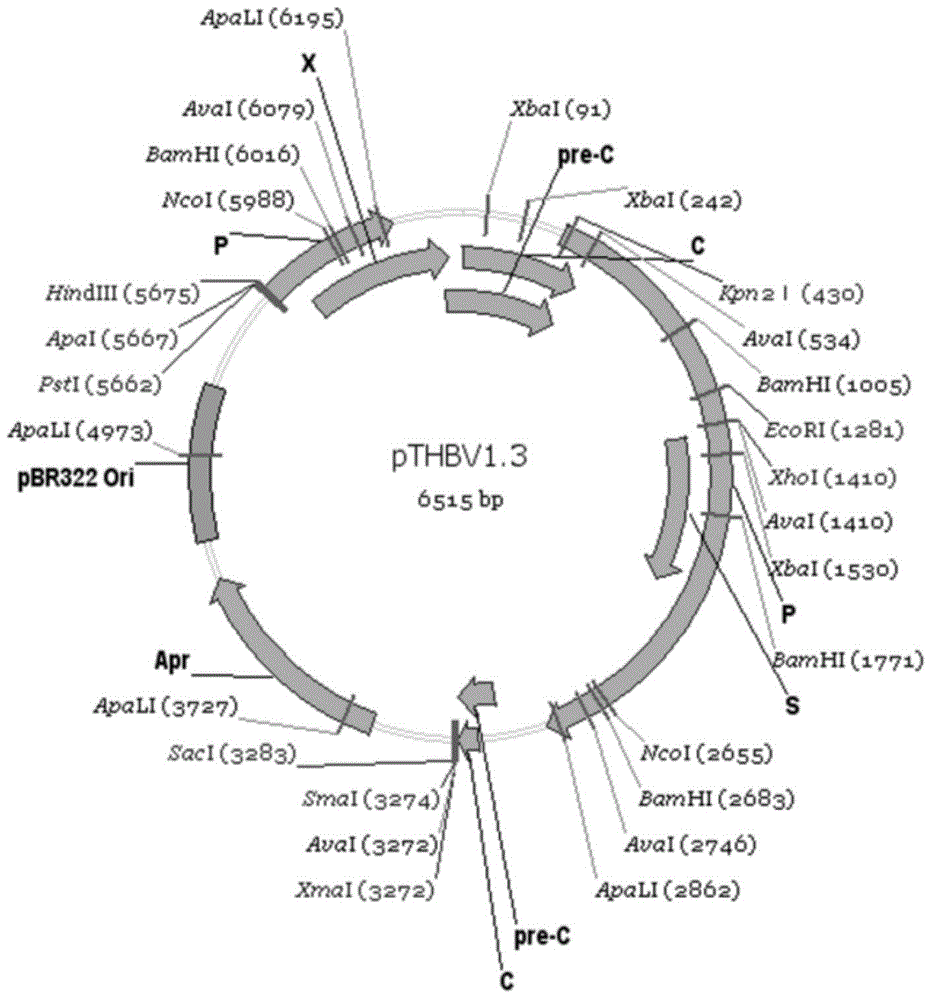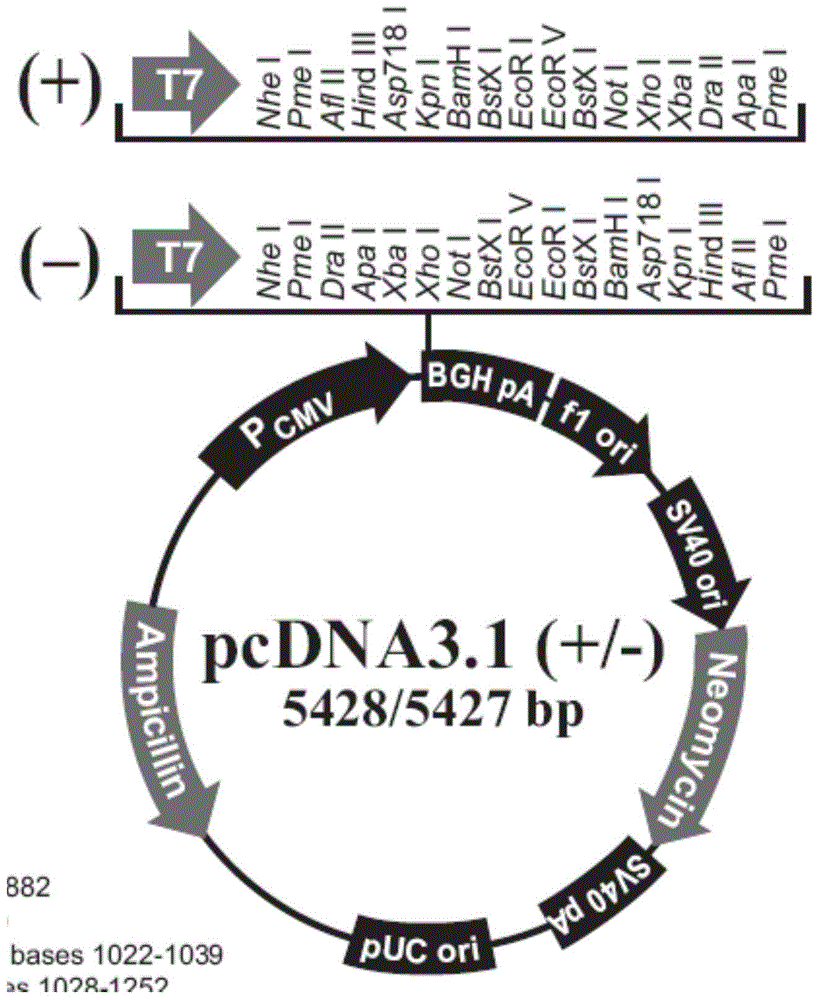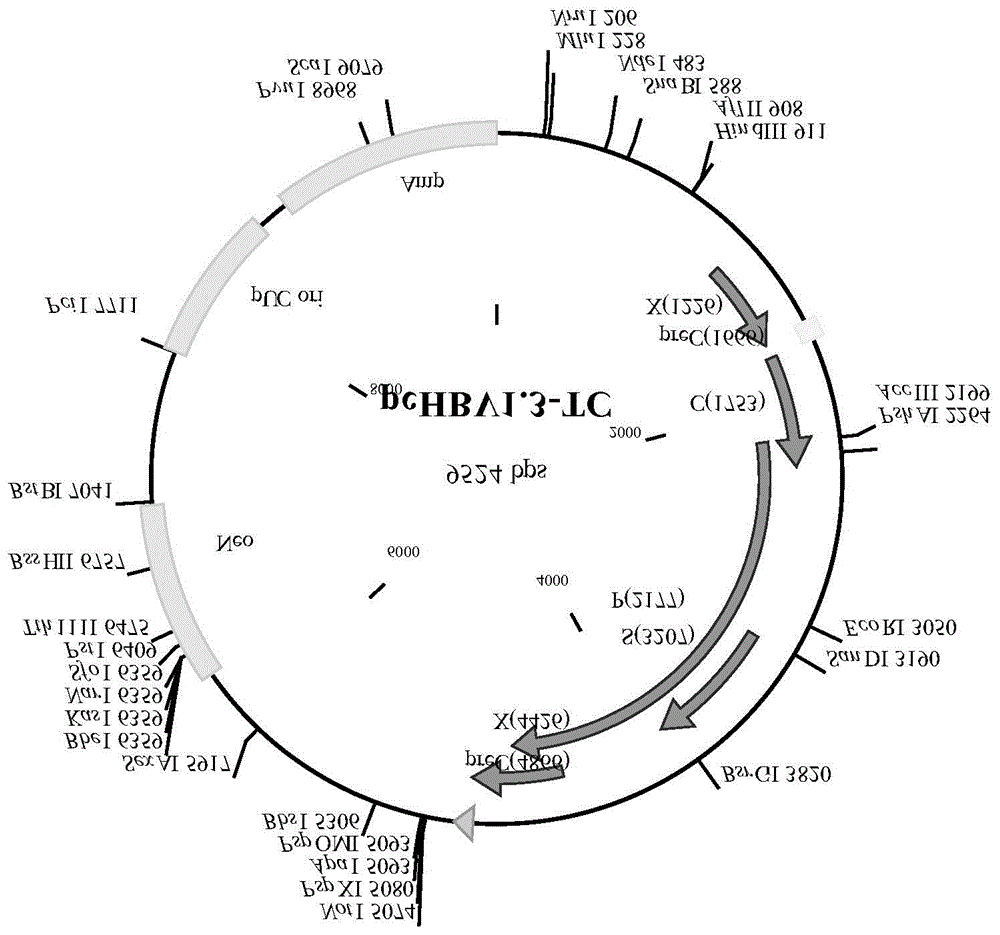Human liver cancer cell line and its application for observing the life cycle of hepatitis B virus in cells
A liver cancer cell line, hepatitis B virus technology, applied in microorganism-based methods, cells modified by the introduction of foreign genetic material, and microorganism assay/inspection, etc., can solve the lack of sensitive cell lines and virus visualization methods, unable to truly confirmation, etc.
- Summary
- Abstract
- Description
- Claims
- Application Information
AI Technical Summary
Problems solved by technology
Method used
Image
Examples
Embodiment 1
[0049] Construction of eukaryotic expression vector pcHBV1.3-TC-1
[0050] 1. Obtain 1.3 times the hepatitis B virus gene
[0051] 1) Design primers, as follows:
[0052] Primers are as follows:
[0053]
[0054] 2) Reaction system
[0055]
[0056] Mix well by flicking, and centrifuge briefly to collect the liquid droplets on the tube wall to the bottom of the tube.
[0057] 3) PCR amplification
[0058] Pre-denaturation at 95°C, 5min
[0059] Cycle (30 times) 30s→95℃, 30s→58℃, 4min30s→72℃,
[0060] End extension 72°C, 5min
[0061] 4) Electrophoresis recovery and purification
[0062] (1) Add 500 μL of equilibrium solution to the CA2 adsorption column, centrifuge at 12,000 g for 30 s, and discard the supernatant.
[0063] (2) Cut off the target band and put it into a clean centrifuge tube.
[0064] (3) Add 3 times the volume of sol solution PN, and bathe in 50°C water until the glue block dissolves.
[0065] (4) Transfer the solution into a CA2 adsorption colum...
Embodiment 2
[0300] Take the above-mentioned eukaryotic expression vector pcHBV1.3-TC-1 as an example, transfect it into human liver cancer cells 1. Cell culture: Take out the frozen TC2 cells from the liquid nitrogen tank, shake them in a water bath at 37°C for 1 minute to dissolve them , add to a 10mL centrifuge tube containing about 5mL of DMEM medium, centrifuge at 1000rpm / min for 5min, remove the supernatant, add to a 75mL culture bottle containing 10mL of medium, place at 37°C, 5% CO 2 in the incubator.
[0301] After 24 hours, the medium was changed once, and when the cells grew to about 90% confluent, they were passaged according to the ratio of 1:2. Wait until there are enough cells for subsequent experiments.
[0302] Observing the cells under a microscope (*100), it was found that the cells could adhere to the wall 8 hours after thawing, and the cells were observed after 24 hours, and the cells were densely grown, growing in clusters, with abundant cytoplasm, one or more nuclei...
PUM
 Login to View More
Login to View More Abstract
Description
Claims
Application Information
 Login to View More
Login to View More - R&D
- Intellectual Property
- Life Sciences
- Materials
- Tech Scout
- Unparalleled Data Quality
- Higher Quality Content
- 60% Fewer Hallucinations
Browse by: Latest US Patents, China's latest patents, Technical Efficacy Thesaurus, Application Domain, Technology Topic, Popular Technical Reports.
© 2025 PatSnap. All rights reserved.Legal|Privacy policy|Modern Slavery Act Transparency Statement|Sitemap|About US| Contact US: help@patsnap.com



